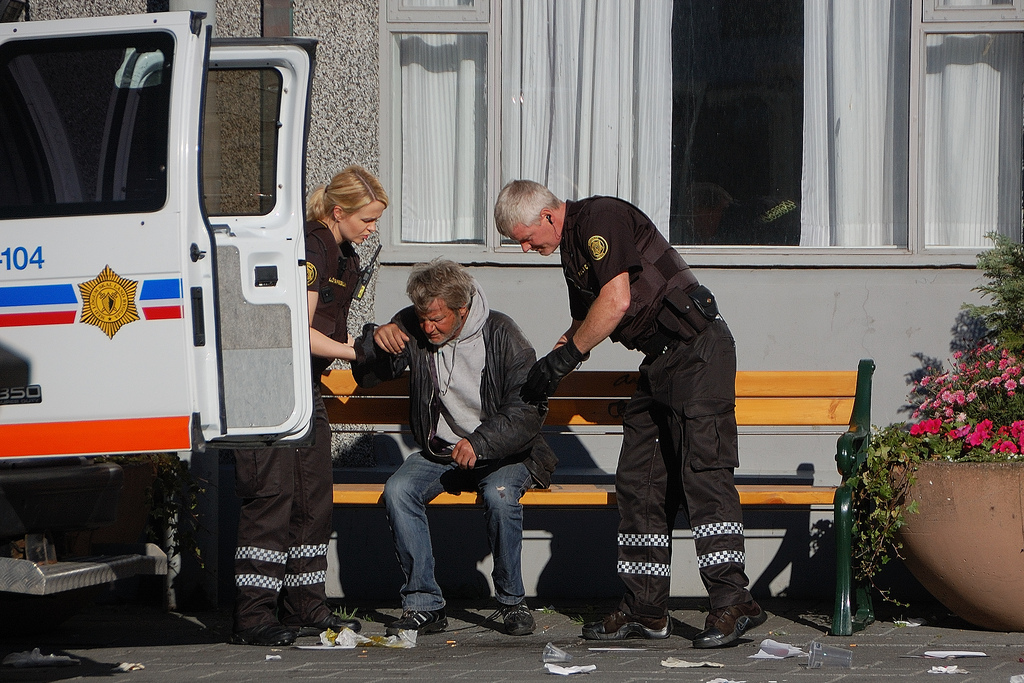2016 Runner Up: Multi-Tiered Behavioral Health Facility Diverts Individuals from the Criminal Justice System
Read media coverage on the mental health court on which this proposal would build in the LA Times. For more information regarding this program, read the BHJC Concept Paper and accompanying press release.
Correction facilities have become the largest psychiatric hospitals in the U.S. today. Due a complex range of issues, including absence of adequate treatment facilities and issues with availability of post-release care, the number of individuals with a mental illness in America’s jails and prisons has skyrocketed over the past twenty years. A majority of criminal justice-involved people in the US have either mental health or substance abuse issues, and many individuals suffer from both. A 2006 Bureau of Justice Statistics survey stated that as many as 64% of jailed inmates self-report as having a mental illness.
For a variety of reasons, the daunting responsibility of mental health care delivery too often falls upon law enforcement agents and jail and prison administrators who are rarely equipped to properly address mental illness-related issues. This issue, in conjunction with related problems in the court system, has generated enormous human and financial costs nationwide.
In recent years, largely due to growing awareness among the public at-large, advocates and clinicians have put increased pressure on policymakers to find more humane, more effective, and less costly solutions. A notable recent example is San Francisco, where city leaders rejected a $240 million state appropriation for the construction of a new jail, recognizing that a new facility with this purpose would not solve the underlying problems that plague the city’s criminal justice system.
In place of a jail, Jennifer Johnson – a public defender in San Francisco and the author of this proposal – suggests a new facility to build on the work of San Francisco’s innovative Behavioral Health Court, with which Johnson works. The ‘Behavioral Health Justice Center’ would provide an integrated, multi-tiered care system that would be structured into four categories, all of which would offer separate functions based on evidenced-based interventions and would employ individualized assessment and treatment as people move through the various stages of the justice system.
The first and most basic would be an intake area, which would provide a diversion from the criminal justice intake system in the form of a reception area offering initial assessment of mental health, physical health, substance abuse needs, and emergency care needs.
The next two levels at the center would be short-term and long-term treatment facilities, which would keep vulnerable populations out of the jail system and provide them with care in a more cost-effective way. In the case of the short-term treatment center, inmates who are cleared for release but would otherwise be jailed while awaiting community residential living spaces would be housed and given less expensive, more humane care. Intensive and comprehensive treatment would be provided for residents at the long-term care level, who would otherwise stay in jail while awaiting state hospital beds, for which inmates are a low-priority population relative to other groups in need of care.
The fourth and highest level within the center would be a secure mental health unit, which would treat jail inmates with serious mental illnesses. Transfers to this unit would only be undertaken at the inmate’s request, and would have to be approved by the court, the prosecutor, and the public defender.
The innovative tiered structure Johnson proposes, coupled with other facilities in the building—including a diversionary mental health court and family visitation/engagement areas—makes this concept among the most unique solutions to the problems resulting from the mentally ill in criminal justice environments. At each level, individuals who require treatment are diverted into more appropriate programming, whether they have just been taken off the street by law enforcement or have already served several months in jail.
Similar programs around the country, albeit on a smaller scale, have shown promising signs of success. In Memphis, officers have been trained to recognize individuals with mental illness and more effectively handle incidents involving someone with a mental illness through diversion from jail intake. A physical facility, like the one Johnson proposes, has been constructed in Bexar County, Texas, and another is under construction in Miami-Dade County, Florida. These facilities incorporate outpatient services, mental healthcare, housing, alternative courtrooms, and preparation for independent living – a model that Johnson hopes to replicate and enhance in San Francisco.
This proposal has some promising precedents and is in line with contemporary research showing that the existing systems to support and properly treat those with a mental illness who interact with the criminal justice system are egregiously inadequate. As Massachusetts now considers the future of its own criminal justice system based on the analysis and deliberations of the Council of State Government’s (CSG) Justice Center and the bipartisan task force with which CSG is partnering, it would make sense for this group to pay close attention to how this proposal unfolds in San Francisco.
Better Government Compendium of Winning Entries 2016: Improving Care for Those with Mental Illness by Pioneer Institute




Leave a Reply
Want to join the discussion?Feel free to contribute!